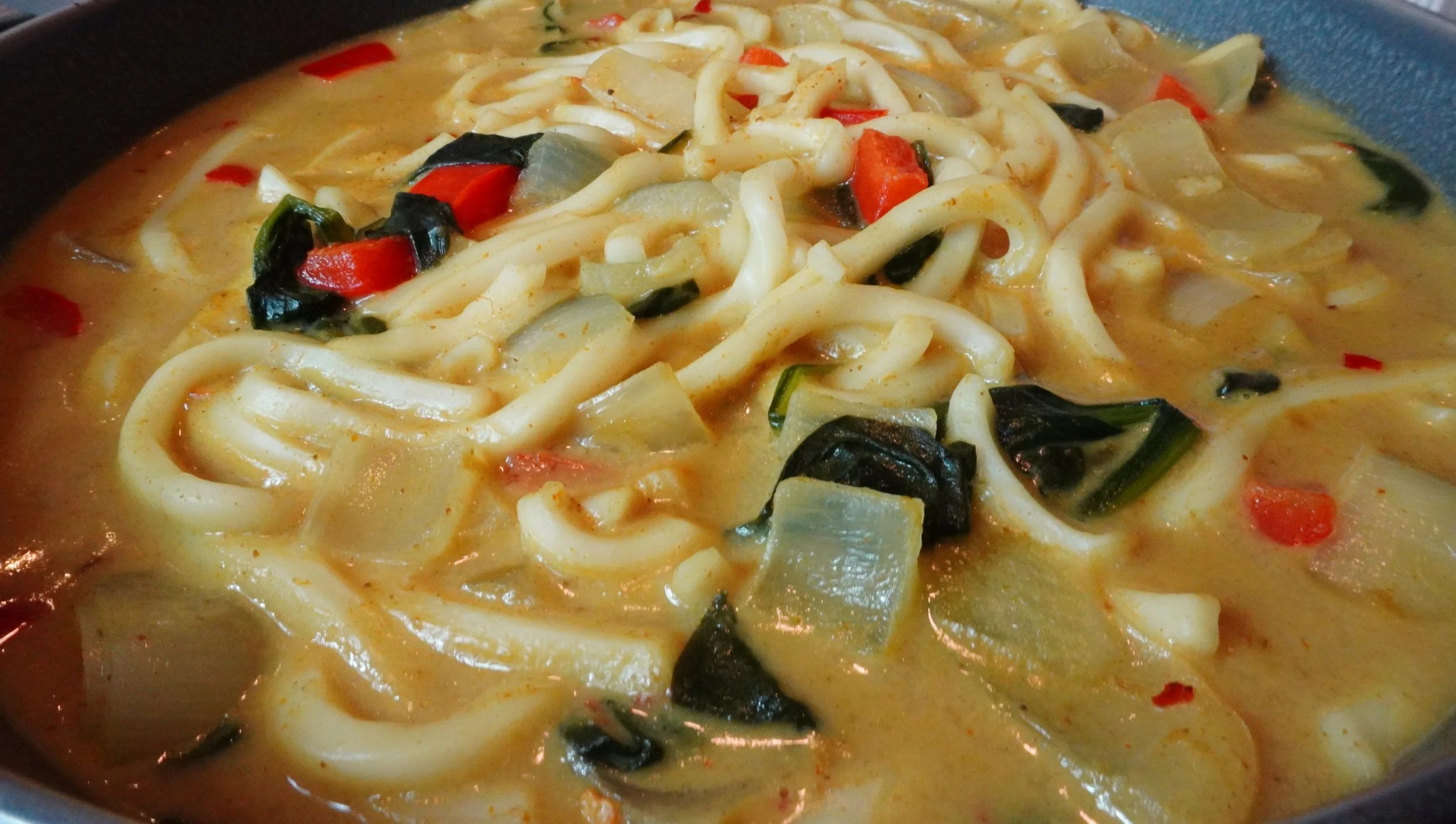This Food in History #19 Biscuits and Gravy
Hello and welcome to today’s episode of This Food in History! Today we are digging into one of my top two favorite breakfast dishes: Biscuits and Gravy! A staple in Southern Comfort food, biscuits and gravy can be found all over the states in many forms and experiments. How did this combination of flavors come to be?
Let’s start by looking at biscuits and how they made their way to the states to be deliciously smothered in gravy. Etymology tells us biscuit comes from the Latin ‘biscotus’, which means twice baked. They have been around for a long time and Medieval versions likely were a precursor to the modern day biscotti. Roman soldiers had biscuits as part of their rations and this introduced the dish to Great Britain in 1588. The Royal Navy added it to their rations as well but at this time, it was called hardtack. They had a long shelf life. Using only flour, water, and salt and baked four times. It needed to be prepared as early as six months in advance so it could dry out for long journeys and not spoil.
We can then thank the Royal Navy and sailors for bringing this hardtack biscuit to the New World. As something fast to bake and with so few ingredients it quickly became a mainstay in the diet. Southern colonies started to evolve the hardtack with access to wheat for fresh flour, cows for buttermilk, and pigs for lard. This version still didn’t involve the expensive yeast though for a rising agent. It wasn’t until 1846 and 1856 that baking soda and powder were invented so they were unleavened.
Cooks did try to improve the texture and used air in the dough by beating it with a rolling pin or mallet for over an hour. Slaves in the south were given tasks like these as it was too much for housewives. This would have made a cracker like texture and made it into one of the first cookbooks written by a Black woman, Abby Fisher’s 1881 cookbook, What Mrs. Fisher Knows About Old Southern Cooking. One of many reasons Black cooks get credit for the foothold biscuits have in the American South.
In 1857, Alexander Ashbourn applied for a patent on a spring loaded biscuit cutter that would standardize shape and size by cutting out multiples together. This was a decade in the making after noticing irregular shaped biscuits at the Emancipation Celebration in 1863.
A Pullman Loaf (and the pan) came about from Black porters on Pullman trains. Among other duties they cooked for passengers in the dining cars. These loaves of bread were a part of the menu. Then in 1930, a salesman, Carl Smith, on a train to San Fran, asked for something after the kitchens had closed and was brought hot biscuits. When he asked the cook about how it was done so fast, Smith was told he had created a pre-mixed blend of lard, flour, salt, and baking powder that he kept on ice. By adding wet ingredients he just had to mix. Smith took this to his employer and it led to boxed mix for biscuits a year later.
Also in 1931, tubed biscuit cans were patented by Lively Willoughby from Kentucky.
Biscuits also didn’t take in the North however for a few reasons, one being the method of serving. Northern palates wanted a cooled bread that they saw as better for digestion while biscuits needed to be eaten hot.
So now we have biscuits in America, and gravy and sauces have a robust but simple history. Early versions have us in the Byzantine Empire and up into the middle ages before we get the French word gravé introduced.
Early gravy was thinner sauces made from meat drippings paired with spices, herbs, and vegetables. This version is closer to an au jus. It was collected in the pan while cooking meat and was served this way. By the 18th century the French expanded gravy to include wines, thickeners, and fats.
As time goes on, Americans and the British start adding a roux to gravy to thicken it and then gravy starts becoming what we know it as in modern day instead of a thinner sauce. So how do we get to the southern sausage gravy and get it onto biscuits?
While I was flipping through articles and posts I found that while the overwhelming majority agree on the origins there are a few dissenting opinions. Let’s start with the dissent. A few sources claim that combining biscuits and gravy started in the American Revolutionary war. Biscuits were a ration food perfect for soldiers as it was fast and easy to make and inexpensive. It is said it was then paired with a sauce leftover from cooking fats and drippings to stretch their limited meat supplies. Pouring this on the biscuits became popular as it was calorie heavy and helped people feel full for longer.
This dish then became popular with laborers and farmers who needed something substantial for long workdays.
This is how we get to the most accepted and technically truer origin for biscuits and sausage gravy. The biscuits and gravy dish spread throughout the South but the place we are going to focus on is the Appalachian region where we will find miners and loggers.
In the late 1800s we had people in Southern Appalachia turning to sawmills. This was intense manual labor and so people needed heart foods. This was also a poor region that couldn’t afford certain types of meat and other foods to satisfy the workers. Enter first, biscuits, which we have already established as cheap and easily made. They were also crispy still at this time. To help compliment this, pork was also cheap as a low quality meat in those days. Cooking pork allowed a pork based gravy to be made and poured on top of the biscuits to create a heavier, calorie dense meal.
In the mid 19th century leavening agents baking powder and baking soda came about and we see biscuits evolve into fluffy versions and gravy thickened with pork. Sawmill gravy and biscuits are shaping up.
The dish became popular and moved across the South and the gravy started attracting regional variants. Charleston created a shrimp gravy, okra gravy in Mississippi, and Appalachian popped out another gravy with chocolate. Red eye gravy uses country ham and coffee.
Sara Roahen and John T. Edge stated in “The Southern Foodways Alliance Community Cookbook,” “The Southern way with gravies was born of privation. . . . And when folks are poor, folks make do. Which means folks make gravy.”
This dish’s popularity was certainly helped with technological advances taking biscuits from “beaten biscuits” that slaves prepared to machine prepped, fluffy treats and quick made versions. It also comes from such cheap ingredients that merge together perfectly in taste with sausage gravy.
Over the next century we see something go from a “dish for the poor” to a comfort food that gains popularity not just in the South but eventually the northern states as well. By the late 20th century you can find biscuits and gravy in restaurant menus as naturally as bacon and eggs.
In “Southern Food,” published in 1987, Egerton writes about country gravy that “It is rare to find in any cookbook a recipe for this quite common and popular companion to hot biscuits,” but that is now no longer the case. “The Joy of Cooking, included a recipe in its 2006 edition.
A dish that packs a wallop in terms of calories and a heavy, full feeling in your belly, biscuits and gravy might have a humble beginning that was there for the working man, but now it has grown to be accepted by many more in our society. From made for workers in the sawmills to restaurants in our big cities, biscuits and gravy is a tasty dish that has travelled across the world to blend together into a breakfast staple for our American South.
This has been This Food in History! Thank you for watching, please like and subscribe if you’d like to see more
Cites:
https://www.simplytexan.com/truly-texan/history-of-biscuits-and-gravy-origins-and-evolution-2/
https://1885grill.com/1885-blog/southern-staples-biscuits-and-gravy
https://www.elvirascafe.net/blog/jr15yxxs7854lkbg4w00awmr3ljdy4-m9b8c-f7adg
https://www.tastingtable.com/1596266/history-biscuits-and-gravy/
https://www.tastingtable.com/1012118/the-working-class-history-of-sausage-gravy/
https://www.kingarthurbaking.com/blog/2023/01/30/history-of-american-biscuits
https://www.yahoo.com/news/history-plate-why-world-loves-163512380.html
https://professionalmoron.com/2020/12/25/gravy-a-brief-history/
https://whatscookinvt.wordpress.com/2016/02/25/mrs-fisher-southern-cooking/
https://foodtellsastory.wordpress.com/2016/01/20/abby-fisher/




